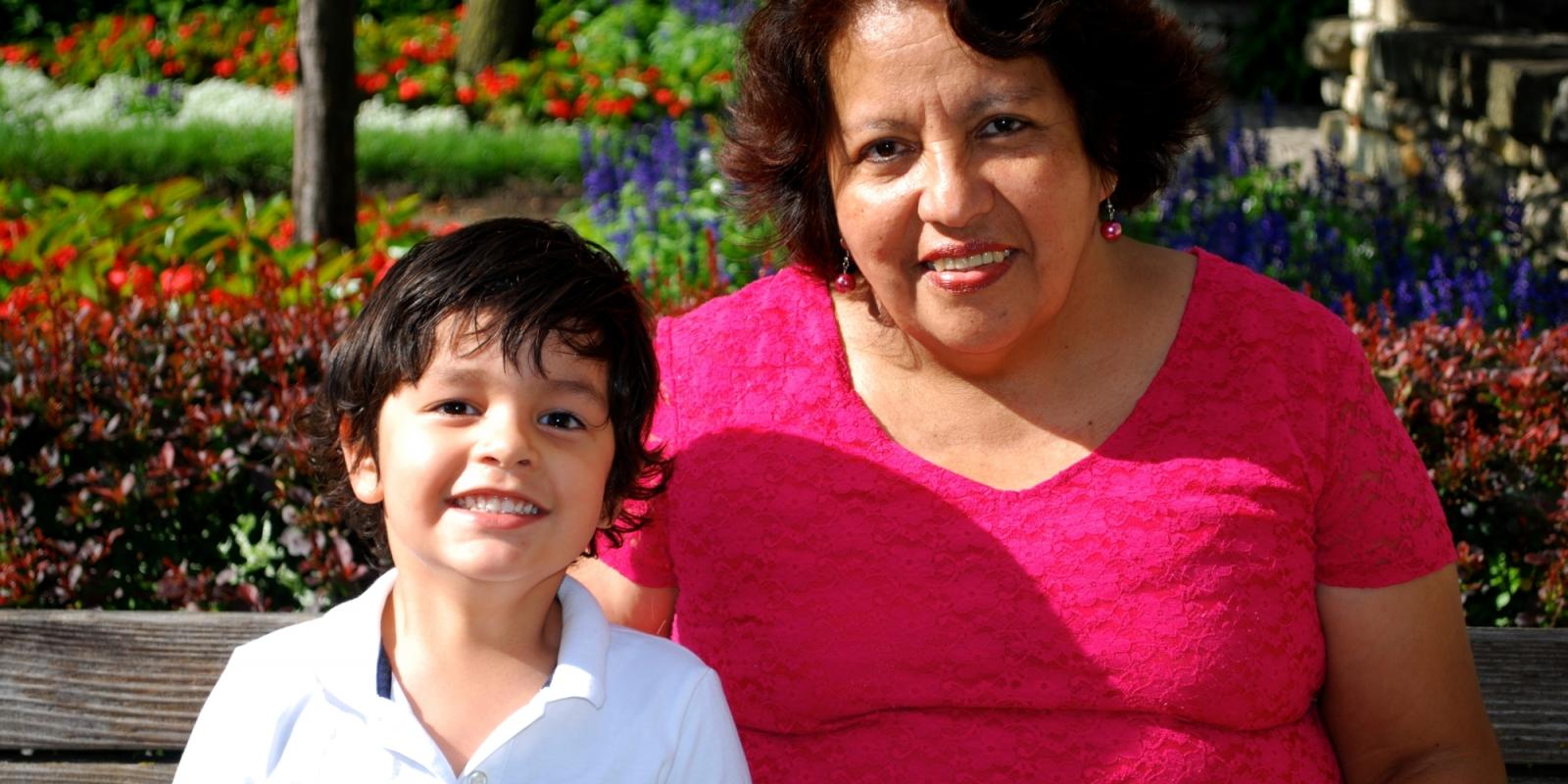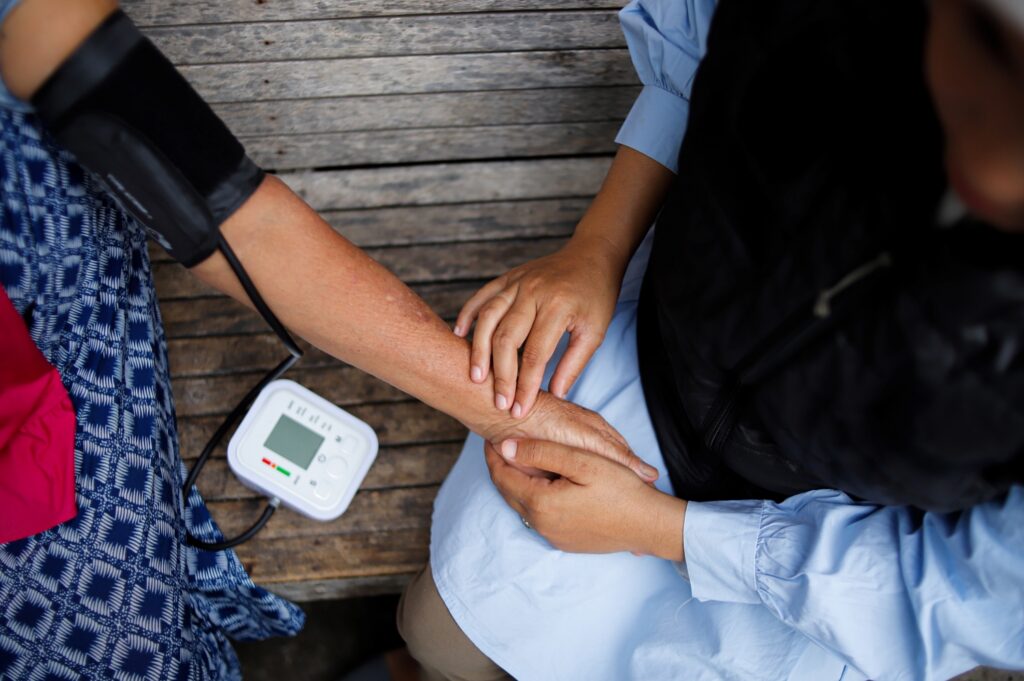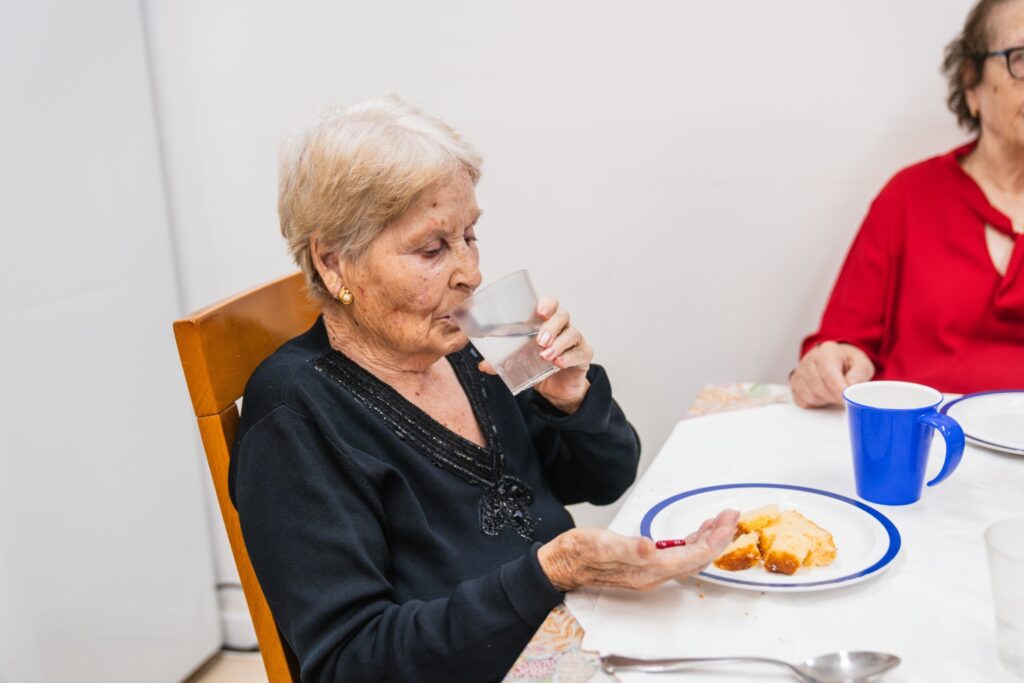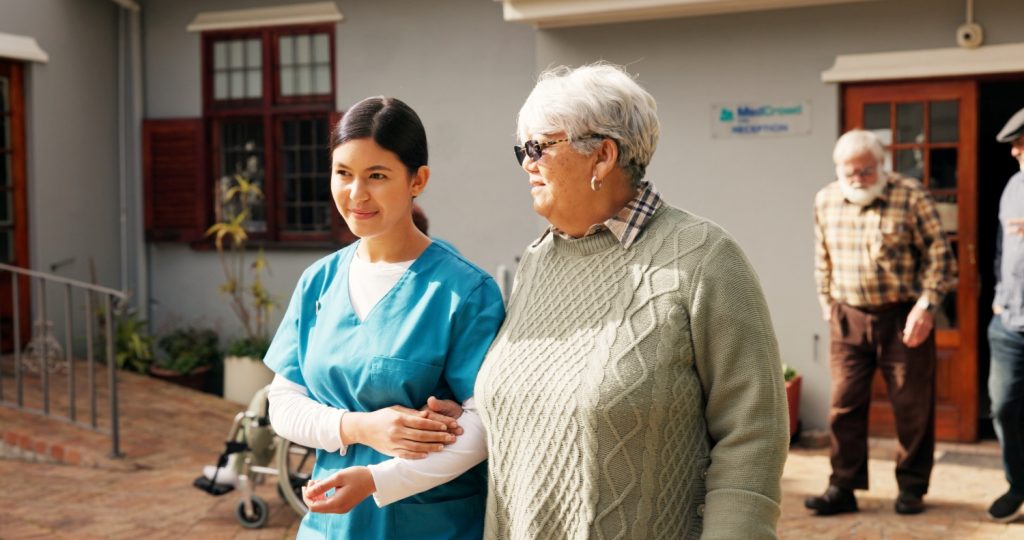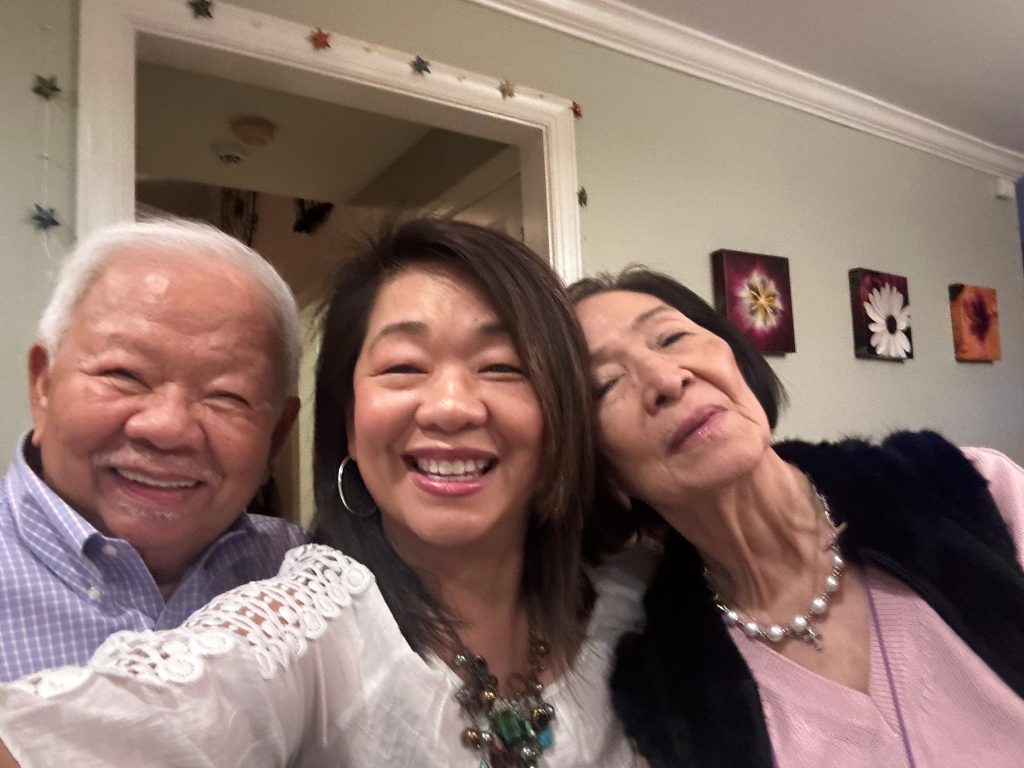Abstract
In order to create culturally appropriate interventions and supportive services for Latina grandmothers raising grandchildren, it is necessary to understand the impact of the Latino culture on these women’s experiences and perspectives. Latino cultural values and beliefs such as familismo, machismo, and marianismo can influence how Latina grandmother caregivers view themselves and their roles. Strengths from these beliefs and values should be considered when supporting Latina grandmother caregivers and their families.
Key Words
Latina grandmothers, grandparents raising grandchildren, cultural impact, Latino culture
Two things are well-known: Latinos are the second largest U.S. ethnic group (behind White Americans; (Funk & Lopez, 2022) and the prevalence of grandparents raising grandchildren in this population continues to grow (Guastaferro et al., 2023). Findings from the American Community Survey found that in 2019, 1 out of 7 children lived with a grandparent and 1.6% of all Latino children lived in homes with a grandparent and no parents (Chen & Guzman, 2022).
The majority of grandparent caregiver research has focused on U.S. majority populations. This is not to say researchers haven’t tried to involve more minority groups, such as those from diverse ethnic, educational, or religious backgrounds; those living in rural areas; or informal caregivers who are not currently using support services. Effectively integrating these and other populations into research is a challenge researchers constantly face and seek to mitigate. Of particular relevance to the present article is the fact that there has been little analysis of the specific difficulties faced when recruiting grandparent caregivers of Latino descent to participate in studies and when convincing them to use vital services.
In addition to these recruitment struggles, it is important to consider the impact of cultural values such as familismo, marianismo, and machismo when trying to understand and support Latina grandmothers. I would argue that these beliefs, in their original sense, are beautiful strengths of the Latino culture.
Unfortunately, during the process of adapting to the dominant culture in the United States, living in accordance with traditional cultural values and beliefs often is viewed as having negative consequences. Evidence suggests this is especially true for Latinos who have experienced greater assimilation to American ideals of self-actualization as opposed to those who maintain familismo, a family-first focus (Cahill et al., 2021; Falzarano et al., 2022; Funk & Lopez, 2022; Sabogal et al., 1987).
This assimilation comes at a cost for families and individuals, with several studies finding an increase in depression and anxiety symptoms in those who do not embrace familismo (Cahill et al., 2021; Falzarano et al., 2022; Sabogal et al., 1987; Steidel & Contreras, 2003). Findings such as these demonstrate the need to increase our understanding of the complex multigenerational issues Latina grandmother caregivers face, as well as their internal struggles.
Familismo, Machismo, and Marianismo
Familismo is recognized as a core value of the Latino culture. It is described as a strong interdependence, attachment, identification, and commitment to one’s family, with family needs superseding those of a single individual (Steidel & Contreras, 2003). This value in Latino culture is guided by the gender-prescribed roles machismo and marianismo.
Machismo is a set of beliefs, values, and attitudes regarding the role of men. These include positive and negative aspects such as honor, aggression, bravery, sexism, and reserved emotions. Machismo describes a man as being responsible for providing, protecting, and defending his family. Currently, there is a growing body of literature featuring a more positive image of the male gender known as caballerismo, which includes attributes such as bravery, providing for family, pride, honor, and treating women with respect and dignity (Nuñez et al., 2016).
‘In accordance with the values of familismo and marianismo, Latina women are introduced to the role of caregiving at a young age.’
The term marianismo has many definitions and is often viewed negatively as the female counterpart of machismo. It is a set of attributes of the “ideal” Latina woman. Specific attributes can vary, but overall the idea is that the woman is the anchor of the family. She should be strong, keep her family united, be selfless, sacrifice her own needs for those of the family, take care of others, and help family members with their problems, all without divulging family issues to anyone outside of the family (K. D. Castillo et al., 2012; Da Silva et al., 2021).
According to L.G. Castillo et al. (2010, 2021), there are five pillars of marianismo: 1) family pillar (main source of strength for the family); 2) virtuous and chaste (morally pure in thought and sexuality); 3) respeto (respect; show obedience and respect for the Latino hierarchical power structure); 4) self-silencing (should not share personal thoughts or needs to maintain harmony in relationships); and 5) spiritual pillar (spiritual leaders of the family).
In accordance with the values of familismo and marianismo, Latina women are introduced to the role of caregiving at a young age. They watch the women around them care for others and are responsible for helping to take care of younger siblings and/or grandparents (Escandón, 2006). This caregiving role becomes part of their identity and is viewed as a virtue. Escandón’s (2006) study with Latina caregivers of older adults provided some examples of the importance of caregiving among Latina women: “I saw caregiving … since I was a small child, my aunt … saw her caregiving to other people, relatives …. My mother was a caregiver for my aunt … . I saw that … all the time” (p. 573). Also:
“I see myself really dedicated to family … I just feel … I will always be there for my parents, that’s the way I was raised … my grandmothers … were [cared for] by the family … . I just feel that there’s a real strong tie when it comes to family relationships.” (p. 574)
I’m a Grandparent; Why Would I Need Help?
When I have interviewed Latina grandmothers, one of the main themes that emerged was that most of these grandmothers did not identify themselves as grandparents raising grandchildren. Instead, they viewed themselves as “helpers” who were filling their familial obligation (Mendoza & Weil, 2014). Calidad, a Cuban grandmother explained it by saying:
“La familia en Cuba no se separan como aqui. Eso es normal-que los abuelitos cuiden a los neitos.” (Families in Cuba don’t separate like they do here. That is normal—for grandparents to care for their grandchildren.)
Another grandmother, Maria, held full responsibility for her granddaughter and two step grandchildren. When I asked her whether she was aware of services available for grandparents raising grandchildren, she gave me a confused look and responded, “No, but I don’t think I qualify because I am not raising my grandchildren.”
Anna, a grandmother raising three grandchildren, explained how her entire life had entailed caregiving—first for her siblings, then her children and parents, and now her grandchildren. She said, “This is what I know, this is my part (role) in my family.”
‘The consensus among the Latina grandmothers was that unlike those grandparents who were using support services, they were not “raising” their grandchildren.’
Overall, the consensus among the Latina grandmothers was that, unlike those grandparents who were using support services, they were not “raising” their grandchildren. They were doing what grandparents do—fulfilling their role as a grandparent by caring for their grandchildren. These grandmothers’ responses coincide with the marianismo attributes discussed earlier.
This brings up a key issue: If Latina grandmothers feel obligated to care for their grandchildren, is there a point at which they would begin to acknowledge the difficulties they are having in fulfilling this obligation? Is there a point where they would say, “Yes, I am actually raising my grandchildren, not just helping”? What would the implications of such a change of perspective have on their well-being?
When Does it Become Too Much?
Grandmothers across the globe take care of their grandchildren. In the grandfamilies literature, a grandparent is raising a grandchild when they are the primary caregiver to that child. This definition may be sufficient in a culture where women are not expected to provide care for their grandchildren, but this definition is not culturally appropriate for the Latino culture. As previously mentioned, Latina grandmothers are expected to be involved in the raising of their grandchildren.
Depending upon their adult child’s life situation, the grandmother’s care may range from caring for a child for a few hours a week to having full responsibility for them. So, the question becomes, when does it go from providing childcare to raising a grandchild? Do we base it on hours/days/weeks or on the types of responsibilities (e.g., school, homework help, doctor appointments)?
Evidence suggests that providing childcare for a grandchild can have positive outcomes for the grandparent, but those positive outcomes may be outweighed by negative outcomes when a grandparent is the primary caregiver (Goodman et al., 2013; Hayslip Jr. & Kaminski, 2005; Lee et al., 2015). It is unclear when caring for their grandchildren becomes too much for a grandparent.
For Latina grandmothers, this situation is further complicated. If they view themselves as helpers, do they experience the same positive outcomes of childcare and the same negative outcomes of having full responsibility of a grandchild? How do the values of marianismo impact a Latina grandmother’s well-being in this role?
I am reminded of Calidad, who moved from Cuba to the United States to raise her grandson while her daughter worked more than 80 hours per week. During our interview she reflected, “Estoy aqui por mi hija, pero aveses miro y me pregunto, porque si ella escojio este camino, porque, yo tenia que seguirla?—pero bueno.” (“I am here for my daughter, but at times I think and ask myself, why, if she chose this path, why did I have to follow her?—but oh well.”)
When asked if she had regrets, Calidad responded:
“No es que me arrepento, por el nino no me puedo arrepentir.” (“No, it’s not that I have regrets. I can’t have regrets because of the boy.”)
In some cases, the commitment and impact it has on her personal life has felt like too much. As another grandmother, Juliana, said:
“I want to take care of Ani (her granddaughter), but I want to be able to have the freedom to go anywhere I want, take computer classes, schedule doctor appointments, and do my own things. But I can’t tell my daughter that. I can’t allow someone who isn’t family to take care of my granddaughter.”
These quotes from Calidad and Juliana demonstrate how the Latino culture has impacted their experiences as Latina grandmother caregivers. They both put aside their own feelings and desires to care for their grandchildren.
How Do We Help?
The first step to supporting these Latina grandmothers is accepting that there is so much we do not yet understand. We must recognize that if we want to support them, we need more research specific to Latina grandmothers, in which their voices take center stage. In the meantime, practitioners and researchers need to take the Latino culture into consideration when delivering interventions and support services to Latina grandmothers.
For example, if Latina grandmother caregivers view themselves as helpers, not as grandparents raising grandchildren, they are not likely to seek or use services advertised for grandparents raising grandchildren. This view of themselves in combination with the belief that one should keep family issues within the family, can be a barrier to service usage. To overcome this challenge and others like it, we must pay attention to the strengths of the cultural values such as marianismo and approach these grandmothers with respect for how they see themselves.
As I mentioned earlier, marianismo is often viewed in a negative light. This may be a result of research focusing more on the negative outcomes related to a Latina woman’s identity, but there are numerous positive attributes of an “ideal” Latina woman. In the example above, where a grandmother sees herself as a helper, her dedication to support and protect her family can be beneficial in encouraging her to accept/seek supportive services not for her own benefit, but for that of her family (e.g., daughter, granddaughter).
‘Interventions that highlight this role, of being the family pillar, can be beneficial in supporting both the Latina grandmother and her family.’
As the pillars of the family, Latinas are respected, admired, serve as role models, and are responsible for the health and unity of the family. Interventions that highlight this role of being the family pillar can be beneficial in supporting both the Latina grandmother and her family. In my own intervention research, I focus on building resilience. One of the ways we do this is through self-care. We help caregivers understand the importance of taking care of themselves. I will often tell grandmothers, “Taking care of yourself is taking care of your grandchildren.” In taking care of themselves, Latina grandmother caregivers are role modeling for their grandchildren (and children), ensuring they can offer the best version of themselves to their grandchildren, and in the process improve the lives of their families. As these suggestions demonstrate, there is so much more that needs to be understood before we can say with confidence that we are supporting Latina grandmothers.
Moving Forward
We need more research on the impact of the Latino culture and acculturation on the experiences and perspectives of Latina grandmother caregivers. I understand this is a complicated task, as there are many layers and complexities to consider. Latino culture encompasses numerous countries, different acculturation levels, and is constantly evolving. Yet, if we are to support Latina grandmother helpers we need to not only learn about their personal experiences and perspectives but also about the culture around them and how it is changing.
The idea of marianismo may fit the experiences of some grandmothers, but it has changed drastically over the years as women have become more independent, educated, and self-advocating. A women’s place in the Latino culture is changing, as evidenced in 2024 when Mexico elected the first woman president in North America, Claudia Sheinbaum Pardo, and by the many women who have been presidents throughout Central America, such as Laura Chinchilla Miranda in Costa Rica and Cristina Fernández de Kirchner in Argentina.
I have witnessed some of these changes in my own experience and observations. For me, an ideal Latina woman is strong, caring (of herself and those around her), the pillar of the family, intelligent, creative, determined, a mama bear, and will stop at nothing to get what she wants (whether for herself or for her children). Here I think of the many women I know who have worked hard and made sacrifices to reach and maintain their career goals. I also think of my grandmother, who found a way to cross the border with no money and five small children.
The changes in perceptions of Latina women are evident and raise the question of whether marianismo is still relevant, or if its relevancy is based on age, class, or geographical location. Yet, it is clear that grandmothers, mothers, sisters, and daughters must be willing to ask their partners and other family members for help, something that remains difficult if not impossible for most Latina women to do.
Yes, I am one of those. I will admit it; I struggle to ask for help. I used to think it was because I am strong and can do anything! Well, I am strong, but I also need to remind myself that being strong does not mean you don’t ask for help; in fact, it takes a lot of strength and courage to recognize you could use the help, to ask for help, and then to accept it. In reflecting now, I remember my grandmother was the same way, my mother is the same way, and so is my daughter.
This subject is both timely and relevant to current social work practice because of the increase in Latinos in the United States, the increase in grandmothers raising grandchildren, and steady immigration to the United States from Latino countries, which often result in children staying behind with their grandparents. The combination of these circumstances results in the need for culturally appropriate supports and interventions for Latina grandmother caregivers which, because of their role in their family, will result in benefits for the entire family.
In understanding how culture influences the experiences of Latina grandmothers, researchers and practitioners must be better equipped to understand their perspectives, tailor support services accordingly, and provide culturally appropriate interventions that employ cultural values in a strengths-based manner. The impact of current changes in values and perspectives on the experiences of Latina grandmothers requires further research to understand how interventions and supports can help their male relatives better support them in their caregiver role. There is evidence that these values can have implications for Latinos’ mental and physical well-being, yet there is much to learn about how these cultural values, as well as adaptations to the dominant culture, impact the well-being of Latina grandmothers caring for grandchildren.
Nancy Mendoza, PhD, is an assistant professor at Ohio State University’s College of Social Work in Columbus, Ohio. She may be contacted at Mendoza.794@osu.edu.
Photo credit: Shutterstock/Jenkedco
References
Cahill, K. M., Updegraff, K. A., Causadias, J. M., & Korous, K. M. (2021). Familism values and adjustment among Hispanic/Latino individuals: A systematic review and meta-analysis. Psychological Bulletin, 147(9), 947-985. https://psycnet.apa.org/doi/10.1037/bul0000336
Castillo, K. D., Henderson, C. E., & North, L. W. (2012). The relation between caregiving style, coping, benefit finding, grandchild symptoms, and caregiver adjustment among custodial grandparents. In B. Hayslip & G. C. Smith (Eds.), Resilient grandparent caregivers (pp. 25-37). Routledge.
Castillo, L. G., González, P., Merz, E. L., Nuñez, A., Castañeda, S. F., Buelna, C., Ojeda, L., Giachello, A. L., Womack, V. Y., Garcia, K. A., Penedo, F. J., Talavera, G. A., & Gallo, L. C. (2021). Factorial invariance of the Marianismo Beliefs Scale among Latinos in the Hispanic Community Health Study/Study of Latinos Sociocultural Ancillary Study. Journal of Clinical Psychology, 77(1), 312-328. https://doi.org/10.1002/jclp.23031
Castillo, L. G., Perez, F. V., Castillo, R., & Ghosheh, M. R. (2010). Construction and initial validation of the Marianismo Beliefs Scale. Counselling Psychology Quarterly, 23(2), 163-175. https://doi.org/10.1080/09515071003776036
Chen, Y., & Guzman, L. (2022, October 12). One in seven Latino children live with grandparents, who play an important role in children’s lives. Hispanic Research Center. https://www.hispanicresearchcenter.org/research-resources/one-in-seven-latino-children-live-with-grandparents-who-play-an-important-role-in-childrens-lives/
Da Silva, N., Verdejo, T. R., Dillon, F. R., Ertl, M. M., & De La Rosa, M. (2021). Marianismo beliefs, intimate partner violence, and psychological distress among recently immigrated, young adult Latinas. Journal of Interpersonal Violence, 36(7-8), 3755-3777. https://doi.org/10.1177/0886260518778263
Escandón, S. (2006). Mexican American intergenerational caregiving model. Western Journal of Nursing Research, 28(5), 564-585. https://doi.org/10.1177/0193945906286804
Falzarano, F., Moxley, J., Pillemer, K., & Czaja, S. J. (2022). Family matters: Cross-cultural differences in familism and caregiving outcomes. The Journals of Gerontology: Series B, 77(7), 1269-1279. https://doi.org/10.1093/geronb/gbab160
Funk, C., & Lopez, M. H. (2022). A brief statistical portrait of U.S. Hispanics. Pew Research Center. https://www.pewresearch.org/science/2022/06/14/a-brief-statistical-portrait-of-u-s-hispanics/
Goodman, C., Scorzo, D., Ernandes, P., & Alvarez-Nuñez, A. (2013). Social and personal resources of grandmother caregivers after grandchildren are grown. In B. Hayslip Jr. & G. C. Smith (Eds.), Resilient grandparent caregivers: A strengths-based perspective. (1st ed., pp. 152-164). Routledge/Taylor & Francis Group.
Guastaferro, K., Mozid, N. E., Kramsky, J., Melkonian, M., Young, K., & Spears, E. (2023). Grandparents raising grandchildren in New York State: Understanding needs of a vulnerable population. Innovation in Aging, 7(Suppl 1), 1050. https://doi.org/10.1093/geroni/igad104.3373
Hayslip Jr., B., & Kaminski, P. L. (2005). Grandparents raising their grandchildren: A review of the literature and suggestions for practice. The Gerontologist, 45(2), 262-269.
Mendoza, A. N., & Weil, J. (2014). “Pue a mi me da gusto, porque ando con ms nietos”; Latina grandmothers raising grandchildren reflect about identity and the careging role over the lifecourse. In D. Mitra & J. Weil (Eds.), Race and the lifecourse (pp. 201-221). Palgrave Macmillan US. https://doi.org/10.1057/9781137463111_9
Nuñez, A., González, P., Talavera, G. A., Sanchez-Johnsen, L., Roesch, S. C., Davis, Sonia. M., Arguelles, W., Womack, V. Y., Ostrovsky, N. W., Ojeda, L., Penedo, F. J., & Gallo, L. C. (2016). Machismo, marianismo, and negative cognitive-emotional factors: Findings from the Hispanic Community Health Study/Study of Latinos Sociocultural Ancillary Study. Journal of Latina/o Psychology, 4(4), 202-217. https://doi.org/10.1037/lat0000050
Lee, Y., Blitz, L. V., & Srnka, M. (2015). Trauma and Resiliency in Grandparent-Headed Multigenerational Families. Families in Society: The Journal of Contemporary Social Services, 96(2), 116-124. https://doi.org/10.1606/1044-3894.2015.96.13
Sabogal, F., Marín, G., Otero-Sabogal, R., Marín, B. V., & Perez-Stable, E. J. (1987). Hispanic familism and acculturation: What changes and what doesn’t? Hispanic Journal of Behavioral Sciences, 9(4), 397-412. https://doi.org/10.1177/07399863870094003
Steidel, A. G. L., & Contreras, J. M. (2003). A new familism scale for use with Latino populations. Hispanic Journal of Behavioral Sciences, 25(3), 312-330. https://doi.org/10.1177/0739986303256912

